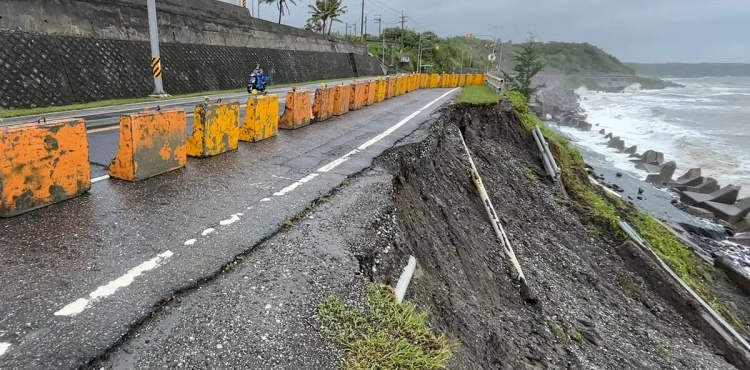On Monday, Typhoon Haikui uprooted hundreds of trees, damaged coastal roads and dumped heavy rains across Taiwan before weakening into a severe tropical storm on its way towards southern China.
At first glance, Haikui appeared to be moving away from the island, but it bounced back to land again early Monday in southwest Kaohsiung before heading toward the Taiwan Strait. There were no reports of deaths.
More than 100 people were injured during the hurricane, according to authorities, although they were minor, mostly due to falling trees and car accidents.
The devastation was seen in the coastal area of Taitung, a mountainous province in less populated eastern Taiwan where the storm struck the day before.
"This is the first time I have seen such a big typhoon in my life," said Chen Haifeng, 55, chief of Dongyi Village in Taitung.
Although Haikui is considered less severe than previous storms, Chen told AFP that he felt stronger while watching workers remove fallen trees on the road.
North in the town of Changbin, workers moved huge concrete blocks to a coastal highway that partially collapsed due to strong waves. Heavy orange barriers were erected near the edge to prevent cars from sliding on the roads.
Keren Chen volunteered to help a rescue crew remove tree branches from a road leading to a school in Taitung County.
“A lot of trees have fallen... We are trying to remove tree branches from the sidewalk so that the children can go to school safely tomorrow,” she told AFP.
In Keelung, a northern coastal city surrounded by mountains, market vendors braved the rain to sell fruit to shoppers wearing raincoats.
Haikui, the first typhoon to hit Taiwan in four years, caused the evacuation of nearly 8,000 people across the island, especially from mountainous areas prone to landslides.
Hundreds of flights were canceled and stores closed.
More than 260,000 families were temporarily without electricity, and about 22,000 homes were without electricity on Monday afternoon, while schools and stores remained closed in 14 cities as heavy rain fell.
An expert at Taiwan's Central Meteorological Office said the typhoon appeared to be moving away from the island and heading out to sea, but returned to land again in Kaohsiung at around 4:00 am (20 GMT).
She added that during the night, “the center of the hurricane was almost rotating” around the coastal city, but as it moved along the coast, it “gradually weakened.”
By midday, the storm had moved southwest of Taiwan's remote Pinghu Island.
The local Kaohsiung government reported hundreds of fallen trees and flooding in dozens of locations, although the situation improved as the storm passed and weather conditions improved.












